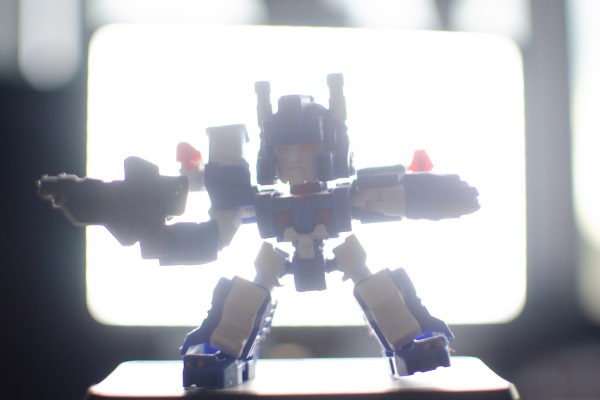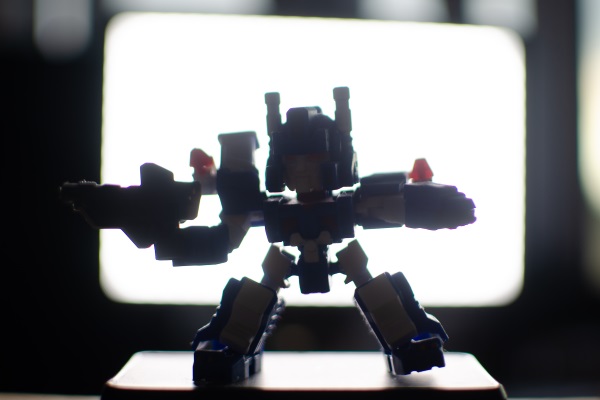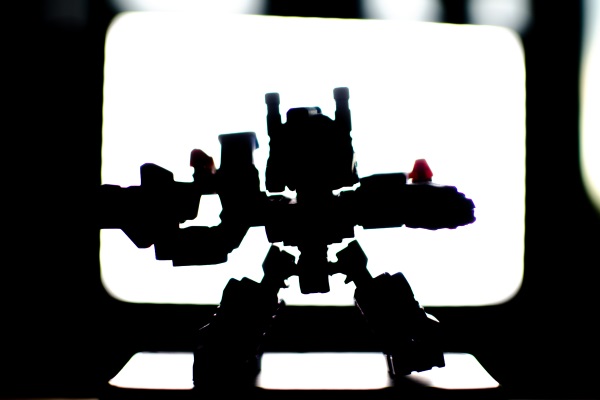How to *reduce* Dynamic Range!!??
Discussion
While the whole World and its dog is obsessed with maximum DR for stills photography - what about when you specifically want low DR - namely for silhouette photography?
Put another way - silhouette photography was a natural 'owning' of a sensor's failings - meter for the highlights, and you're guaranteed a lovely black silhouette, given the DR limitations of the sensor/film.
So - where cameras all have fantastic DR - what setting, what parameter can I play with, to make a high-DR sensor good at not catching the maximum range of the scene's contrast?
Fyi - camera = Canon 5DIV
Thanks in advance.
Put another way - silhouette photography was a natural 'owning' of a sensor's failings - meter for the highlights, and you're guaranteed a lovely black silhouette, given the DR limitations of the sensor/film.
So - where cameras all have fantastic DR - what setting, what parameter can I play with, to make a high-DR sensor good at not catching the maximum range of the scene's contrast?
Fyi - camera = Canon 5DIV
Thanks in advance.
Simpo Two said:
You can play with exposure but if that won't work I've never heard of a function to reduce DR. In the film days I think it was called 'litho'.
I'd shoot it the best you can, then use Photoshop etc to achieve the result you want. The 'levels' sliders will beast the heck out of it.
Ah, many thanks. I'd shoot it the best you can, then use Photoshop etc to achieve the result you want. The 'levels' sliders will beast the heck out of it.
So it does seem that an improvement in one regard creates issues in another (albeit specific) regard.
I don't actually do any post-processing - using JPEGS straight from the camera (it gets pre-processed by definition).
Seems to be a genuine conundrum for silhouette or required 'low-DR' photography!
If you're shooting jpeg then somewhere in the Canon menus will be an option to increase contrast and there may be other settings that will push things in that direction - I haven't used any Canon cameras for a long time so can't be more specific. Even starting from a jpeg, pushing things into silhouette with any editing software should work pretty well.
Arif110 said:
I don't actually do any post-processing - using JPEGS straight from the camera (it gets pre-processed by definition).
Give RAW and Lightroom (or similar) a try, Adobe generally offer free trials - you might be surprised at the creative control it can offer, particularly on a 5D mark IV.JulianHJ said:
Give RAW and Lightroom (or similar) a try, Adobe generally offer free trials - you might be surprised at the creative control it can offer, particularly on a 5D mark IV.
In this instance RAW won't help. He wants less detail/info, not more, and white balance is hardly an issue with a silhouette. No doubt Lightroom can do what he needs but he doesn't need to start with RAW and the extra level of complexity it brings.Arif110 said:
While the whole World and its dog is obsessed with maximum DR for stills photography - what about when you specifically want low DR - namely for silhouette photography?
Put another way - silhouette photography was a natural 'owning' of a sensor's failings - meter for the highlights, and you're guaranteed a lovely black silhouette, given the DR limitations of the sensor/film.
So - where cameras all have fantastic DR - what setting, what parameter can I play with, to make a high-DR sensor good at not catching the maximum range of the scene's contrast?
Fyi - camera = Canon 5DIV
Thanks in advance.
Crush the blacks in Lightroom. Export. Put another way - silhouette photography was a natural 'owning' of a sensor's failings - meter for the highlights, and you're guaranteed a lovely black silhouette, given the DR limitations of the sensor/film.
So - where cameras all have fantastic DR - what setting, what parameter can I play with, to make a high-DR sensor good at not catching the maximum range of the scene's contrast?
Fyi - camera = Canon 5DIV
Thanks in advance.
Thanks all - esp Simpo Two for your kind offer.
I'm actually too much of a Luddite to get into post-processing, and all this stuff you're all on about!
My last camera before this one was an EOS 1V - so it seems I've returned to DSLR photography in its twilight era - again!
My workflow (this is mainly a hobby, for fun) is: take photo >> upload into gallery. End of.
So at most I'll play with some in-camera settings, like 'Picture Style' for a Canon.
I was used to photography being about getting to know your film-stock and getting it to do what you want, as much as possible.
Silhouettes are for me such a classic thing to do in photography, I'm surprised that as manufacturers increased dynamic range, they didn't think of an easy way for scenes to be exposed for the chosen part, with the rest 'excluded' from good exposure - really, an 'LDR' setting!
Hey ho - it is what it is - and thanks all for your time, input and help.
Arif
I'm actually too much of a Luddite to get into post-processing, and all this stuff you're all on about!
My last camera before this one was an EOS 1V - so it seems I've returned to DSLR photography in its twilight era - again!
My workflow (this is mainly a hobby, for fun) is: take photo >> upload into gallery. End of.
So at most I'll play with some in-camera settings, like 'Picture Style' for a Canon.
I was used to photography being about getting to know your film-stock and getting it to do what you want, as much as possible.
Silhouettes are for me such a classic thing to do in photography, I'm surprised that as manufacturers increased dynamic range, they didn't think of an easy way for scenes to be exposed for the chosen part, with the rest 'excluded' from good exposure - really, an 'LDR' setting!
Hey ho - it is what it is - and thanks all for your time, input and help.
Arif
Arif110 said:
I'm surprised that as manufacturers increased dynamic range, they didn't think of an easy way for scenes to be exposed for the chosen part, with the rest 'excluded' from good exposure - really, an 'LDR' setting!
They do - it's the AE-lock button.Quick and dirty example:
Exposure on the foreground figure

AE lock Exposure on the background light

Same but a bit of shadow processing

Is that what you're after?
Yes buddy - that final pic is the effect I'm talking about - but your second pic is a good example of how metering off the highlights no longer creates a silhouette - so expansive is the DR!
Your AE Lock advice - I deploy it by default, because I use spot metering.
However - I just don't have the inclination for the hobby to require me to sit in front of a computer - so PS, LR - can't be a55ed with!
I know I've therefore blocked my path to a perfectly valid solution - but I was more wondering if there's something else that I'm missing.
A bit like how a car might skid all over the place in snow when moving off - and really all along there was a gearbox 'setting' to deal with this specific scenario.
Your AE Lock advice - I deploy it by default, because I use spot metering.
However - I just don't have the inclination for the hobby to require me to sit in front of a computer - so PS, LR - can't be a55ed with!
I know I've therefore blocked my path to a perfectly valid solution - but I was more wondering if there's something else that I'm missing.
A bit like how a car might skid all over the place in snow when moving off - and really all along there was a gearbox 'setting' to deal with this specific scenario.
Arif110 said:
A bit like how a car might skid all over the place in snow when moving off - and really all along there was a gearbox 'setting' to deal with this specific scenario.
No gearbox setting is going to be superior to putting proper tyres on it and adapting your driving style to the conditions. That's a general topic debated to death in another thread, but you catch my drift 
Have you tried changing the 'Exposure Compensation' on the camera by going darker to -3 to -5. Do this by clicking on the 'Q' button then selecting the exposure compensation bar and moving the setting towards the darker (left) side. Just remember to reset it afterwards.
I have a 5D3 and set mine accidentally a few months ago and couldn't understand why all my pics were coming out too dark!
I have a 5D3 and set mine accidentally a few months ago and couldn't understand why all my pics were coming out too dark!
eltawater said:
No gearbox setting is going to be superior to putting proper tyres on it and adapting your driving style to the conditions. That's a general topic debated to death in another thread, but you catch my drift 
Well - my cars have only ever been full manual, with low-range gearboxes, and shod with BF Goodrich Mud Terrains or Cooper ST Maxxes (which take snow studs!) - so you're preaching to the converted!
However - especially where technology has taken over (digital, versus film) - cars come with 'for-stupid' buttons - so was wondering if cameras had anything similar for those who wanted more film-like DR.
Edited by Arif110 on Monday 15th June 23:00
rich888 said:
Have you tried changing the 'Exposure Compensation' on the camera by going darker to -3 to -5. Do this by clicking on the 'Q' button then selecting the exposure compensation bar and moving the setting towards the darker (left) side. Just remember to reset it afterwards.
I have a 5D3 and set mine accidentally a few months ago and couldn't understand why all my pics were coming out too dark!
I've always used the camera in full-manual, including metering - and so the problem is more that when a highlight has been correctly metered and exposed for - the lowlights still get 'caught'/seen!I have a 5D3 and set mine accidentally a few months ago and couldn't understand why all my pics were coming out too dark!
The only blunt solution would be to drastically under-expose the highlights - which would just be gross, visually.
Arif110 said:
I've always used the camera in full-manual, including metering - and so the problem is more that when a highlight has been correctly metered and exposed for - the lowlights still get 'caught'/seen!
The only blunt solution would be to drastically under-expose the highlights - which would just be gross, visually.
To me, what you want is achievable in camera, but you need to think more about lighting.The only blunt solution would be to drastically under-expose the highlights - which would just be gross, visually.
Why do the lowlights get 'caught' by the camera? - because light is bouncing around the room and illuminating the dark side of your object you want to silhouette.
If you were in a dark studio, with black walls, with only one light source, and you're shooting into it, you'd end up with a pure silhouette, as no light is bouncing around to illuminate the dark side of your subject.
Perhaps you can experiment with controlling your lighting - pulling curtains across, using black drapes or fabric to box it you're subject a bit, so you can create the right lighting conditions for a silhouette
Gassing Station | Photography & Video | Top of Page | What's New | My Stuff



